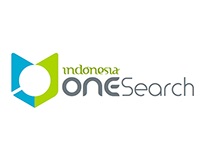PHOTOGRAMMETRY: DALAM UPAYA PELESTARIAN ARSITEKTUR PUSAKA
Abstract
Visualisasi virtual objek arsitektur saat ini sangat diperlukan dalam mempelajari arsitektur baik digunakan untuk kepentingan umum atau pun akademik. Di Indonesia visualisasi virtual masih terbatas pada objek arsitektur baru, lalu bagaimana dengan objek terbangun/objek arsitektur pusaka? Hal ini semakin memperkuat pentingnya melakukan visualisasi virtual untuk objek terbangun, khususnya objek pusaka. Visualisasi (rekonstruksi virtual) sendiri termasuk dalam satu proses besar pelestarian dan pembangunan terintegrasi dalam konsep Heritage Building information Modeling (H-BIM). Mengambil objek amatan yang tersebar dalam Kawasan Komplek Candi Borobudur, penelitian ini sekaligus ingin mempelajari manfaat rekonstruksi virtual dalam pelestarian kawasan dalam konsep besar. Menggunakan dua jenis sumber data (Source-Based dan Reality-Based), peneliti mencoba merekonstruksi objek amatan dan mengidentifikasi karakternya. Tujuan dari penelitian ini selain untuk menghasilkan visualisasi 3D menggunakan Agisoft-Metashape juga mengangkat diskusi pentingnya rekonstruksi virtual sebagai awalan dalam tahapan kolase data dalam meny usun Historic Urban Landscape (HUL). Hasil dari identifikasi yaitu amatan merupakan kawasan permukiman pedesaan masyarakat sosial-jawa yang diperkuat oleh karakter berupa; tata masa yang menyatu dengan alam, jenis material bangunan yang masih memanfaatkan bahan baku setempat, dan minimnya ornamentasi pada komponen bangunan. Bagian akhir, penelitian ini memperoleh kesimpulan bahwa masih kuatnya identitas kawasan dengan karakter permukiman pedesaan perlu dipertahankan dan diperkuat dalam pembangunan berkelanjutan yang semua tergabung dalam one gate data system (open source).
Full Text:
PDFReferences
Abdulameer, Z. A., & Abbas, S. S. (2020). Adaptive reuse as an approach to sustainability. IOP Conference Series: Materials Science and Engineering, 881(1). https://doi.org/10.1088/1757-899X/881/1/012010
Andriasyan, M., Moyano, J., Nieto-Julián, J. E., & Antón, D. (2020). From point cloud data to Building Information Modelling: An automatic parametric workflow for heritage. Remote Sensing, 12(7). https://doi.org/10.3390/rs12071094
Boniotti, C. (2021). The public–private–people partnership (P4) for cultural heritage management purposes. Journal of Cultural Heritage Management and Sustainable Development. https://doi.org/10.1108/JCHMSD-12-2020-0186
BPPI. (2003). Piagam Pelestarian Kota Pusaka.
Demetrescu, E. (2018). Virtual reconstruction as a scientific tool: The extended matrix and source-based modelling approach. Communications in Computer and Information Science, 817, 102–116. https://doi.org/10.1007/978-3-319-76992-9_7
Dirjen Kebudayaan, K. P. dan K. R. I. (2021). 20210405_Management Plan BTC.pdf.
Drap, P., Grussenmeyer, P., Hartmann-virnich, A., & Photogrammetric, A. H. (2008). Photogrammetric stone-by-stone survey and archeological knowledge : an application on the Romanesque Priory Church Notre-Dame d ’ Aleyrac To cite this version :
Fangi, G., Piermattei, L., & Wahbeh, W. (2013). Spherical Photogrammetry as Rescue Documentation for the Reconstruction of Some UNESCO Sites in Syria. International Journal of Heritage in the Digital Era, 2(3), 335–341. https://doi.org/10.1260/2047-4970.2.3.335
Ginzarly, M., Houbart, C., & Teller, J. (2019). The Historic Urban Landscape approach to urban management: a systematic review. International Journal of Heritage Studies, 25(10), 999–1019. https://doi.org/10.1080/13527258.2018.1552615
ICOMOS. (n.d.). Guidance on Heritage Impact Assessment for Cultural World Heritage Propertise. 148, 148–162.
Nakaya, T., Yano, K., Isoda, Y., Kawasumi, T., Takase, Y., Kirimura, T., Tsukamoto, A., Matsumoto, A., Seto, T., & Iizuka, T. (2010). Virtual Kyoto project: Digital diorama of the past, present, and future of the historical city of Kyoto. Lecture Notes in Computer Science (Including Subseries Lecture Notes in Artificial Intelligence and Lecture Notes in Bioinformatics), 6259 LNCS, 173–187. https://doi.org/10.1007/978-3-642-17184-0_14
Nex, F., & Remondino, F. (2014). UAV for 3D mapping applications: A review. Applied Geomatics, 6(1), 1–15. https://doi.org/10.1007/s12518-013-0120-x
Pardamean, B. S., & Tolle, H. (2021). Pembuatan Objek 3D Candi Badut Menggunakan Metode Photogrammetry. Physics and Science Education Journal (PSEJ), 5(6), 1–2.
Prabowo, B. N., Pramesti, P. U., Ramandhika, M., & Sukawi, S. (2020). Historic urban landscape (HUL) approach in Kota Lama Semarang: Mapping the layer of physical development through the chronological history. IOP Conference Series: Earth and Environmental Science, 402(1). https://doi.org/10.1088/1755-1315/402/1/012020
Santander, A. A., Garai-Olaun, A. A., & Arana, A. de la F. (2018). Historic urban landscapes: A review on trends and methodologies in the urban context of the 21st century. Sustainability (Switzerland), 10(8). https://doi.org/10.3390/su10082603
UNESCO. (2016). The HUL Guidebook. The HUL Guide, 59. http://historicurbanlandscape.com/themes/196/userfiles/download/2016/6/7/wirey5prpznidqx.pdf
UNESCO. (2017). UNESCO moving forward the 2030 Agenda for Sustainable Development. The United Nations Educational, Scientific and Cultural Organization, 22. http://en.unesco.org/sdgs
UNESCO, J. H. S. (2021). Documentation of The Traditional Building Character in Cultural Landscape of Borobudur Region.
UNESCO, W. H. C. (2011). UNESCO Recommendation on HUL. Records of the General Conference 36th Session, 25.
Wong, J., Wang, X., Li, H., Chan, G., & Li, H. (2014). A review of cloud-based bim technology in the construction sector. Journal of Information
Technology in Construction, 19(August), 281–291.
Yang, X., Grussenmeyer, P., Koehl, M., Macher, H., Murtiyoso, A., & Landes, T. (2020). Review of built heritage modelling: Integration of HBIM and other information techniques. Journal of Cultural Heritage, 46, 350–360. https://doi.org/10.1016/j.culher.2020.05.008
DOI: https://doi.org/10.17509/jaz.v6i1.48914
Refbacks
- There are currently no refbacks.
Copyright (c) 2023 Pusparini Dharma Putri, Laretna Trisnantari Adishakti

This work is licensed under a Creative Commons Attribution-ShareAlike 4.0 International License.





